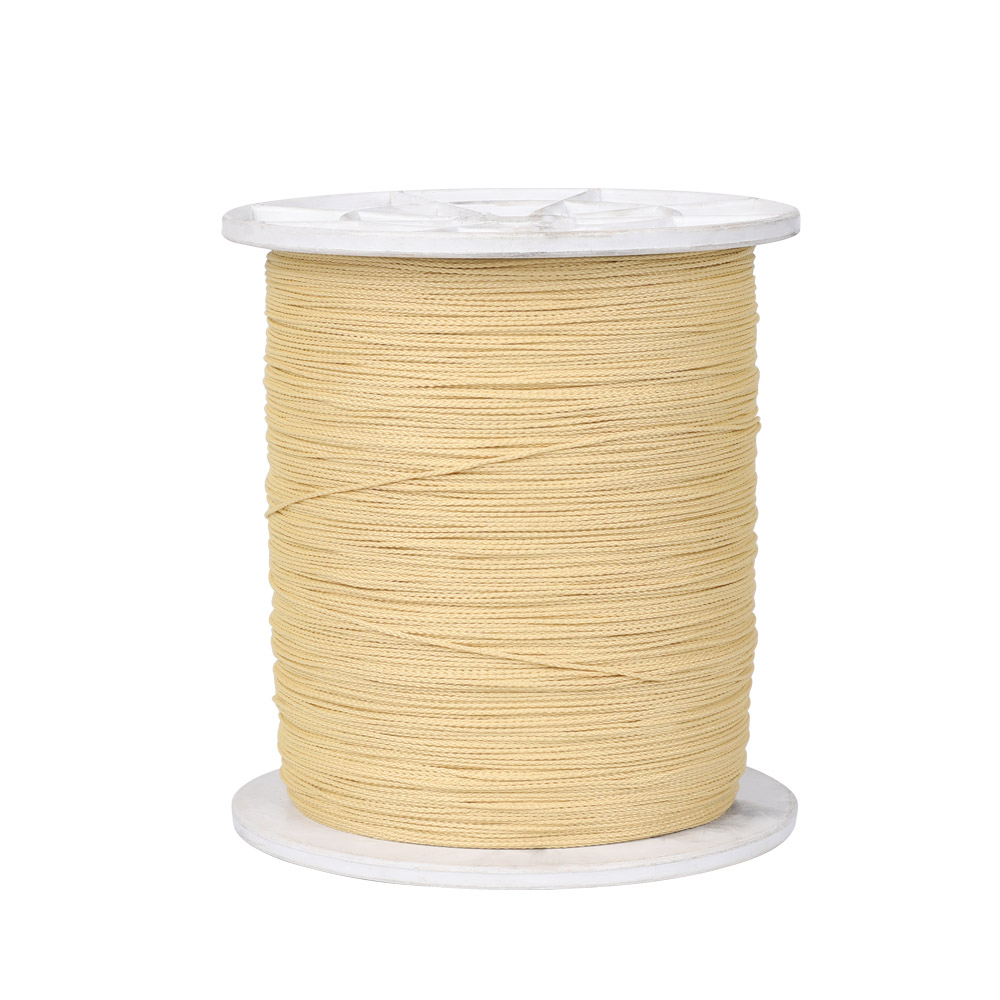Polyester aramid binding wire represents a cutting-edge material solution, combining the distinct advantages of both polyester and aramid fibers. This composite construction results in a binding wire with a unique set of characteristics, making it highly suitable for demanding applications where traditional materials fall short.
Understanding the Components
To fully appreciate the properties of polyester aramid binding wire, it's essential to understand the contributions of its constituent materials:
-
Polyester: A synthetic polymer known for its excellent strength-to-weight ratio, low moisture absorption, good chemical resistance (especially to acids and alkalis), and resistance to stretching and shrinking. It also offers good dimensional stability and UV resistance.
-
Aramid: A class of heat-resistant and strong synthetic fibers, most notably including para-aramids (like Kevlar and Twaron) and meta-aramids (like Nomex). Aramids are renowned for their exceptional tensile strength, high modulus, outstanding heat resistance, flame retardancy, and good chemical resistance. They possess a high strength-to-weight ratio, often five times stronger than steel on an equal weight basis.
Key Characteristics of Polyester Aramid Binding Wire
The synergistic combination of these materials imbues polyester aramid binding wire with a range of superior characteristics:
1. Exceptional Tensile Strength and High Modulus
The most prominent feature is its extraordinary tensile strength. The inclusion of aramid fibers significantly boosts the wire's ability to withstand pulling forces without breaking. This high strength is coupled with a high modulus, meaning it resists deformation and stretching under load, maintaining its structural integrity even in high-stress environments. This makes it ideal for applications requiring robust and stable binding.
2. Superior Heat and Flame Resistance
Aramid fibers are inherently thermally stable and flame retardant. This property is transferred to the binding wire, allowing it to maintain its performance in elevated temperatures where other materials would degrade or melt. It exhibits excellent resistance to ignition and self-extinguishes, making it a safe choice for applications in electrical, aerospace, and industrial settings where fire hazards are a concern.
3. Excellent Dimensional Stability
Polyester contributes significantly to the wire's dimensional stability. It resists shrinking and stretching under varying environmental conditions, including changes in temperature and humidity. This ensures that the bound components remain securely fastened over time, preventing loosening or shifting.

4. Good Chemical and Environmental Resistance
The wire demonstrates robust resistance to a wide range of chemicals, including common solvents, oils, and acids, though the specific resistance can vary based on the exact aramid and polyester types used. Furthermore, it offers good UV resistance, preventing degradation from prolonged exposure to sunlight, and is resistant to rot, mildew, and moisture, making it suitable for both indoor and outdoor applications.
5. Lightweight
Despite its immense strength, polyester aramid binding wire is remarkably lightweight. This characteristic is particularly advantageous in applications where weight reduction is critical, such as in aerospace, automotive, and high-performance sporting goods.
6. Abrasion and Fatigue Resistance
Both polyester and aramid contribute to the wire's excellent resistance to abrasion, making it durable in environments where friction or rubbing might occur. It also exhibits good fatigue resistance, meaning it can withstand repeated cycles of loading and unloading without significant loss of strength, which is crucial for dynamic applications.
7. Dielectric Properties (for specific types)
While not universally true for all binding wires, specialized polyester aramid compositions can be engineered to possess favorable dielectric properties, meaning they are non-conductive. This makes them suitable for electrical insulation and binding applications in sensitive electronic components where electrical interference needs to be minimized or insulation is required.
Applications
The unique blend of characteristics makes polyester aramid binding wire an ideal choice for a diverse range of demanding applications, including:
-
Electrical and Electronics: Binding and insulation in motors, transformers, generators, and other electrical components, especially where high temperatures are present.
-
Aerospace: Securing wiring harnesses and components due to its high strength-to-weight ratio and fire resistance.
-
Automotive: Cable management and structural reinforcement in various vehicle parts.
-
Industrial: Heavy-duty bundling, lashing, and reinforcement in manufacturing and construction.
-
Sporting Goods: Applications requiring lightweight strength, such as in sails, climbing gear, and composite structures.
Conclusion
Polyester aramid binding wire stands out as a high-performance material, offering a compelling combination of extreme strength, thermal stability, dimensional integrity, and environmental resistance. Its multifaceted characteristics provide engineers and designers with a superior solution for critical binding and reinforcement applications across numerous industries, pushing the boundaries of what is possible in material science.
 English
English
 中文简体
中文简体









